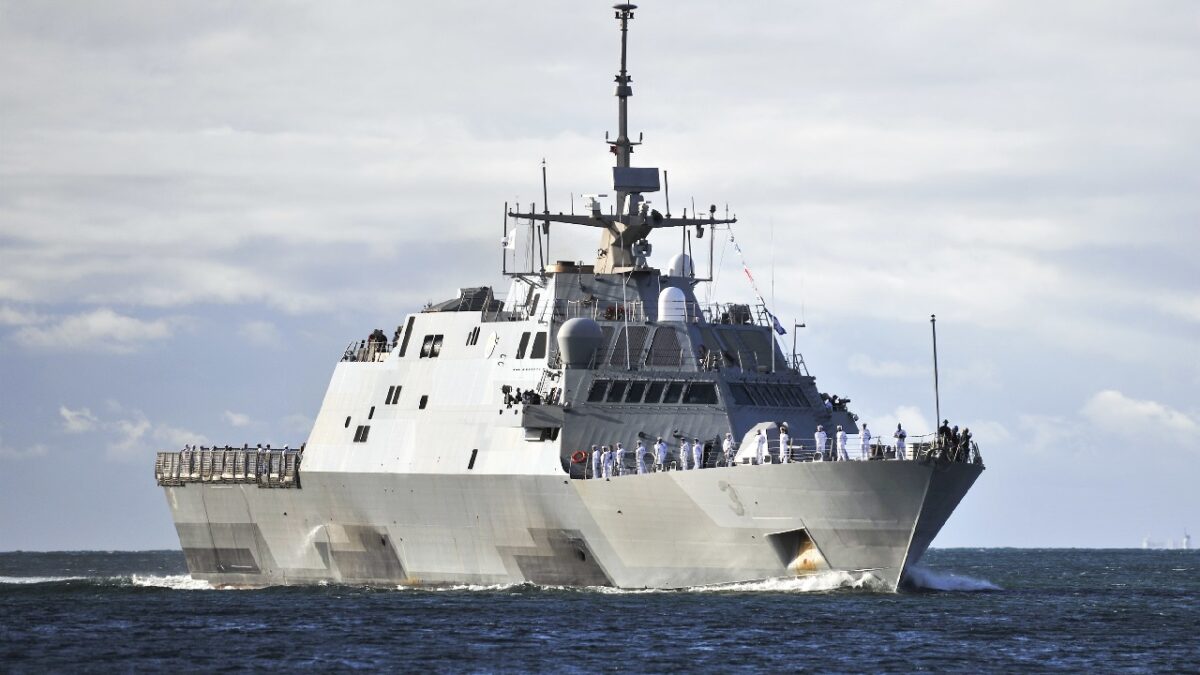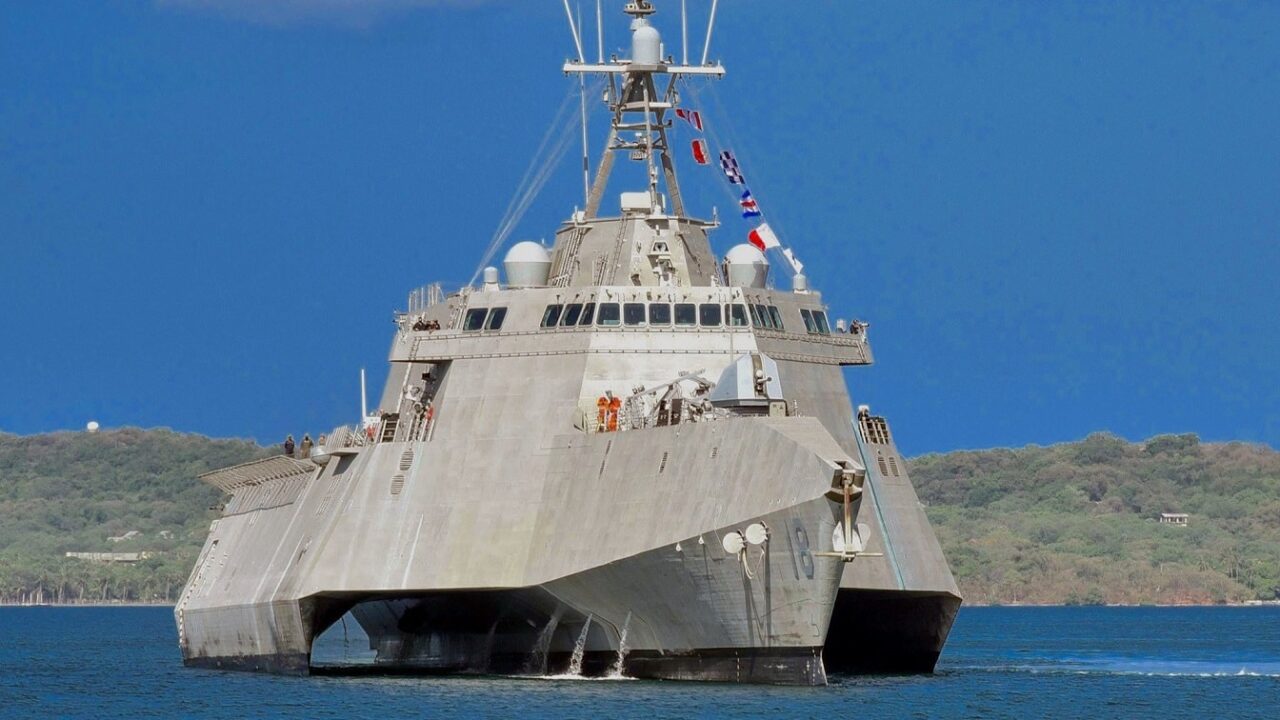USS Sioux City Decommissioned after Five Years – The U.S. Navy’s Freedom-class Littoral Combat Ship (LCS) USS Sioux City was a white elephant the day she was commissioned in November 2018.
Now, less than five years later, the Navy decommissioned the ship that cost $362 million to build.
The ship aided the U.S. Coast Guard with drug interdiction missions and visited Europe last year.
“Though our ship’s service ends today, her legacy does not,” Capt. Daniel Reiher, commander of Littoral Combat Ship Training Facility Atlantic, said at the USS Sioux City’s decommissioning ceremony. “For years to come the Sailors who served onboard will carry forth lessons learned and career experiences gained.”
Not all were happy with the decommissioning.
“Hard to figure this one out. At a minimum, we should figure out a way to transfer this nearly brand-new warship to a partner navy. Hate to see anything decommissioned when we are so far behind China in overall ship count,” former NATO Supreme Commander Adm. James Staviridis tweeted.
Hated By Congress
The class of ship was panned on Capitol Hill due to questions about its niche in the U.S. Navy and survivability in combat.
The LCSs were intended in the 2000s to provide support in shallow waters for partner nations at a time when China was not seen as the menacing threat that it is today.
“The missions needed were not what that ship was built to perform, now the Navy should have worked to find a niche for it, and putting NSMs on the LCS gets at that a little as well as adding drones to them. Need for mine warfare too ― still use for these LCS perhaps even as a training or reserve asset,” Heritage Foundation naval analyst Brent Sadler told 19Fortyfive.
The Freedom-class has been plagued by transmission problems and design flaws that made it more cost-effective for the Navy to cut its losses instead of funding constant repairs.
Repairing the ships was estimated to cost between $8 million and $10 million per ship for a total cost between $56 million and $70 million.
Last year, California Democratic Rep. Jackie Speier panned the ship as “Leaky Cracked Ships” during a speech on the House floor last year.
“We all know what lemon cars are. We have a fleet of lemon LCS ships,” she said at the time. “We have spent billions of dollars on this fleet when they have no capability to help us deal with our largest threat, which is that of China and Russia. The only winners have been the contractors on which the Navy relies for sustaining these ships.”
LCS’s Giving Way to Changing Strategies
The LCSs like the USS Sioux City are being cleared from the Navy’s roster to free up funds that have proven scarce due to different priorities in Joe Biden’s Navy.
The Navy’s Fiscal Year 2024 budget proposal puts those priorities in acquiring the Columbia-class ballistic missile submarine, two Virginia-class submarines, two Arleigh Burke-class destroyers, two Constellation-class frigates, and a John Lewis class fleet oiler.

The littoral combat ship USS Fort Worth (LCS 3) arrives to Joint Base Pearl Harbor-Hickam for a scheduled port visit. Fort Worth deployed for a scheduled 16-month rotational deployment to Singapore in support of the Navy’s strategic rebalance to the Pacific. Fort Worth is the first littoral combat ship to deploy under the 3-2-1 manning concept, swapping fully trained crews roughly every four months and extending the littoral combat ship forward presence. (U.S. Navy photo by Mass Communication Specialist 2nd Class Diana Quinlan/Released)
“Ultimately, the Navy has to make difficult decisions on how to invest in the future,” Naval Surface Force Atlantic spokesman Lt. Cmdr. David Carter told Defense News in an email. “To maintain our strategic advantage, particularly under fiscal constraints, it is important for the Navy to carefully review our force structure regularly and divest of legacy capabilities that no longer bring sufficient lethality to maximize our effectiveness in deterring and defeating potential adversaries.”
John Rossomando is a defense and counterterrorism analyst and served as Senior Analyst for Counterterrorism at The Investigative Project on Terrorism for eight years. His work has been featured in numerous publications such as The American Thinker, The National Interest, National Review Online, Daily Wire, Red Alert Politics, CNSNews.com, The Daily Caller, Human Events, Newsmax, The American Spectator, TownHall.com, and Crisis Magazine. He also served as senior managing editor of The Bulletin, a 100,000-circulation daily newspaper in Philadelphia, and received the Pennsylvania Associated Press Managing Editors first-place award for his reporting.
From the Vault
‘You Really Oughta Go Home’: F-22 Raptor Stealth Fighter Flew Under F-4 From Iran

